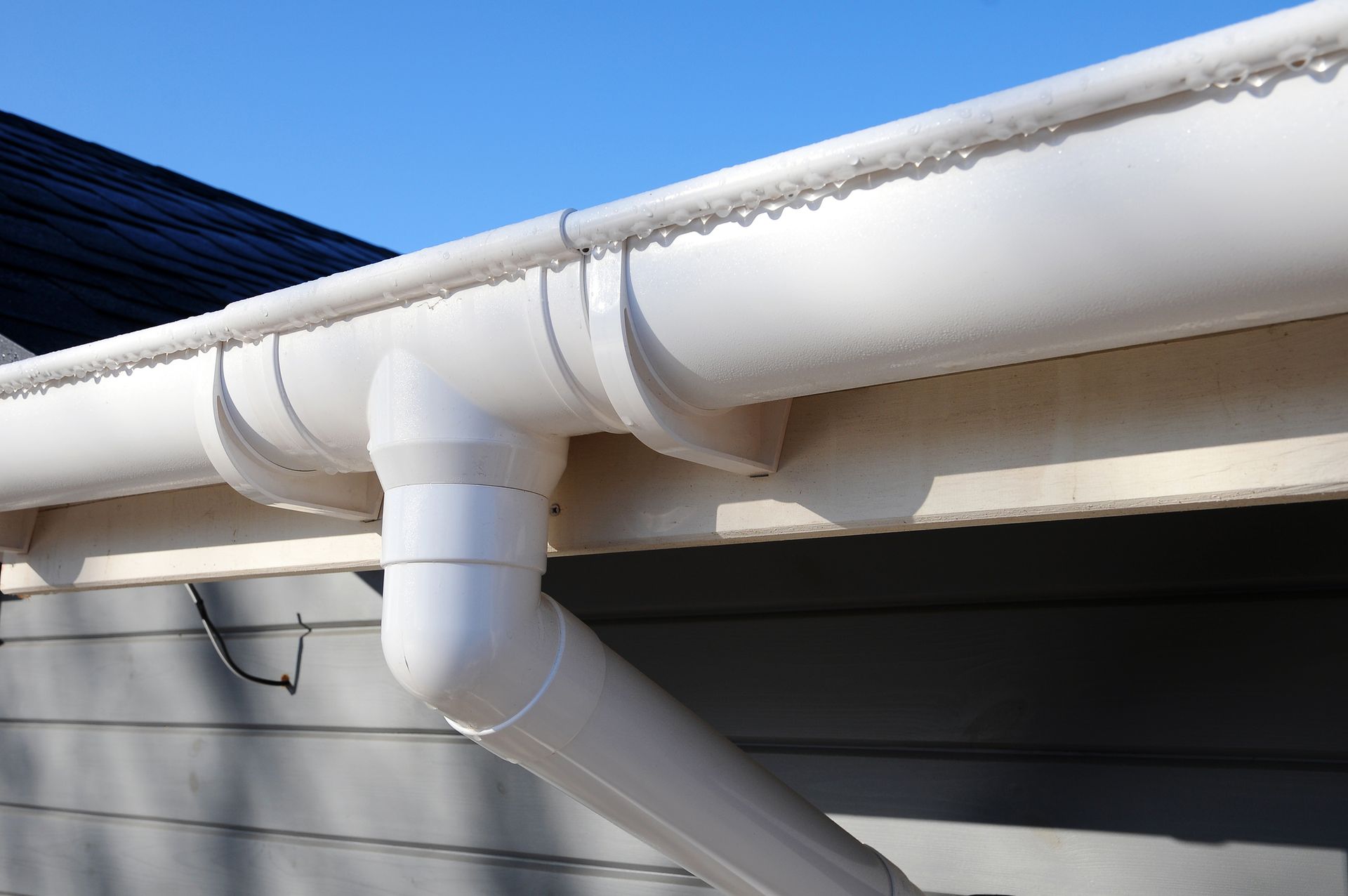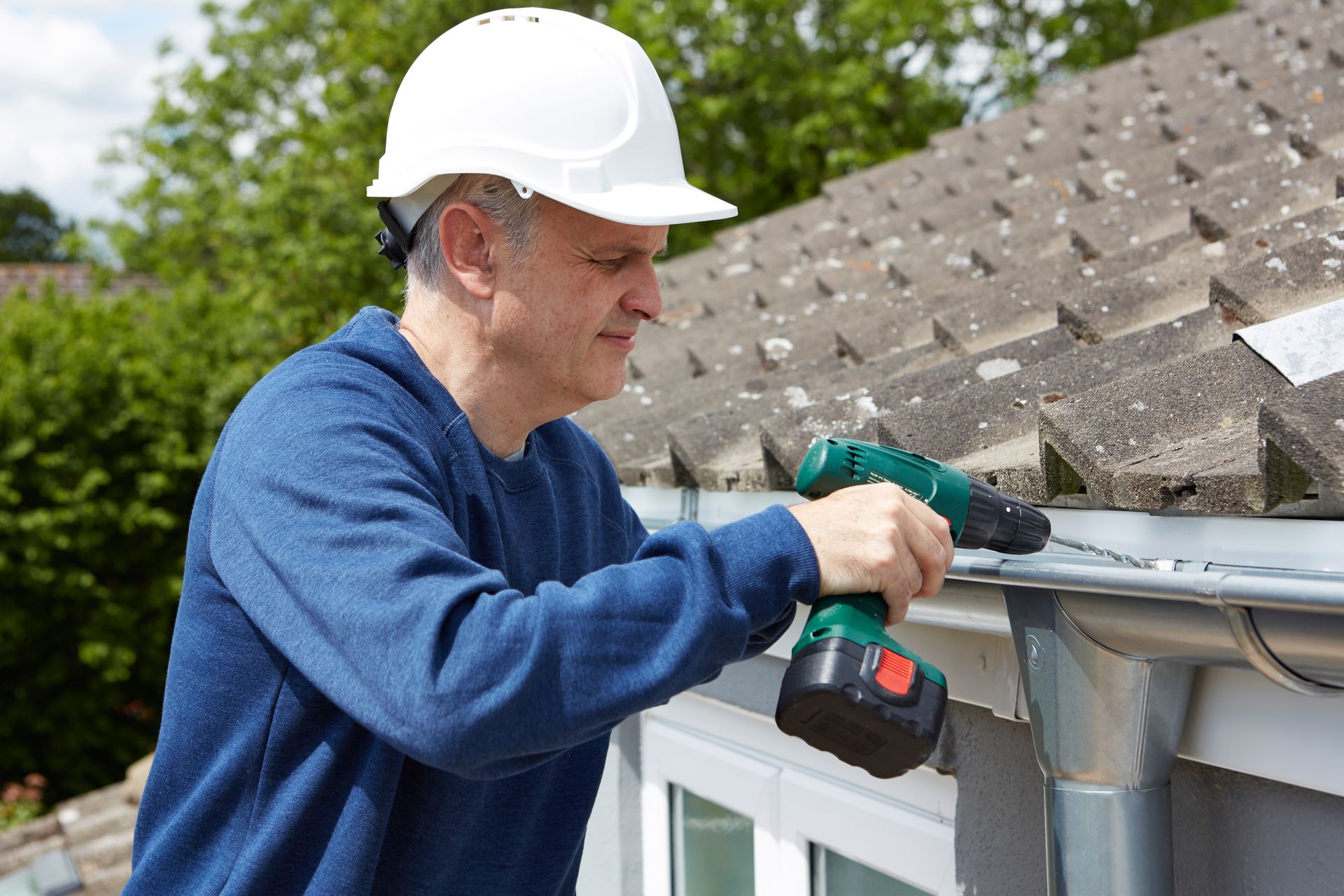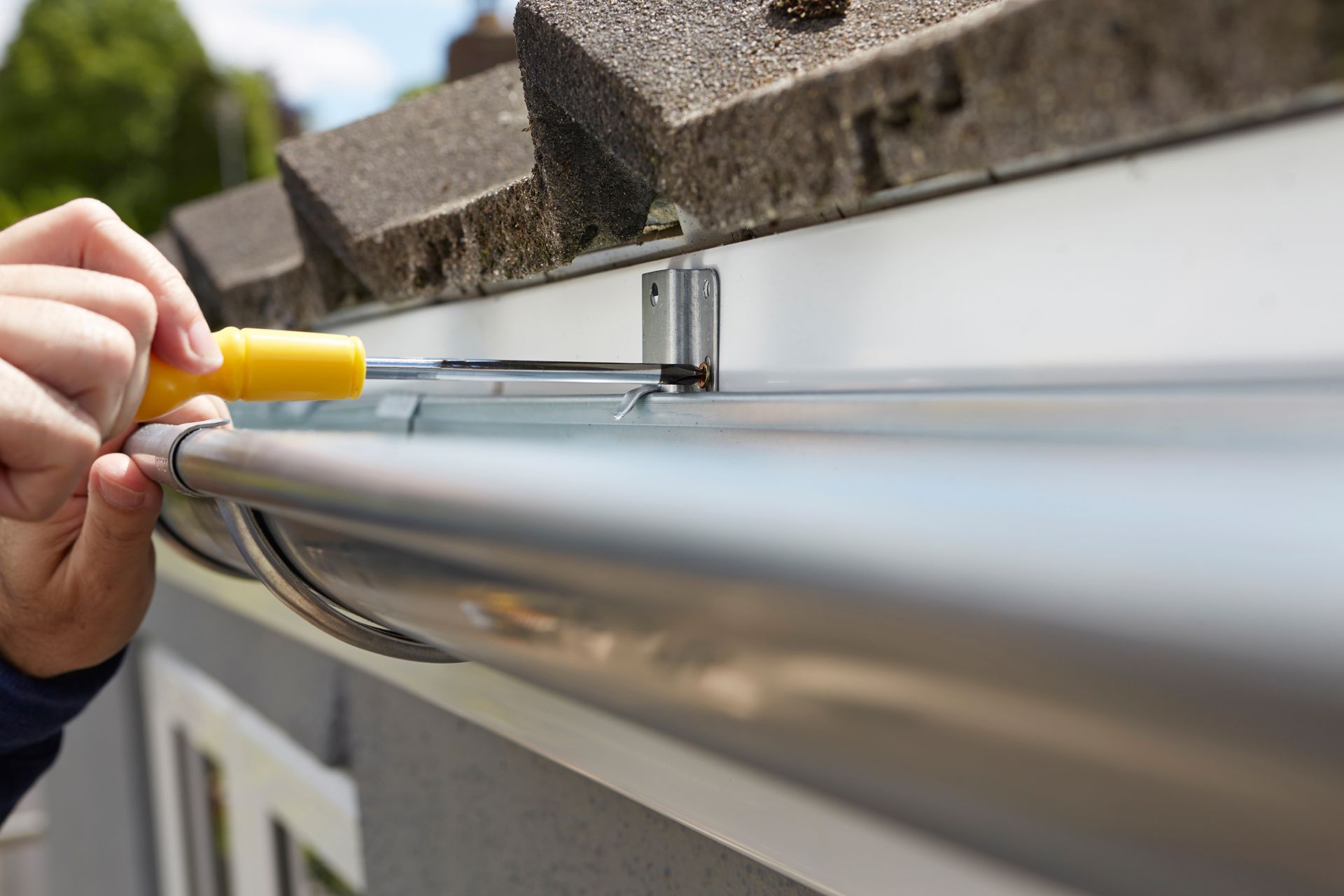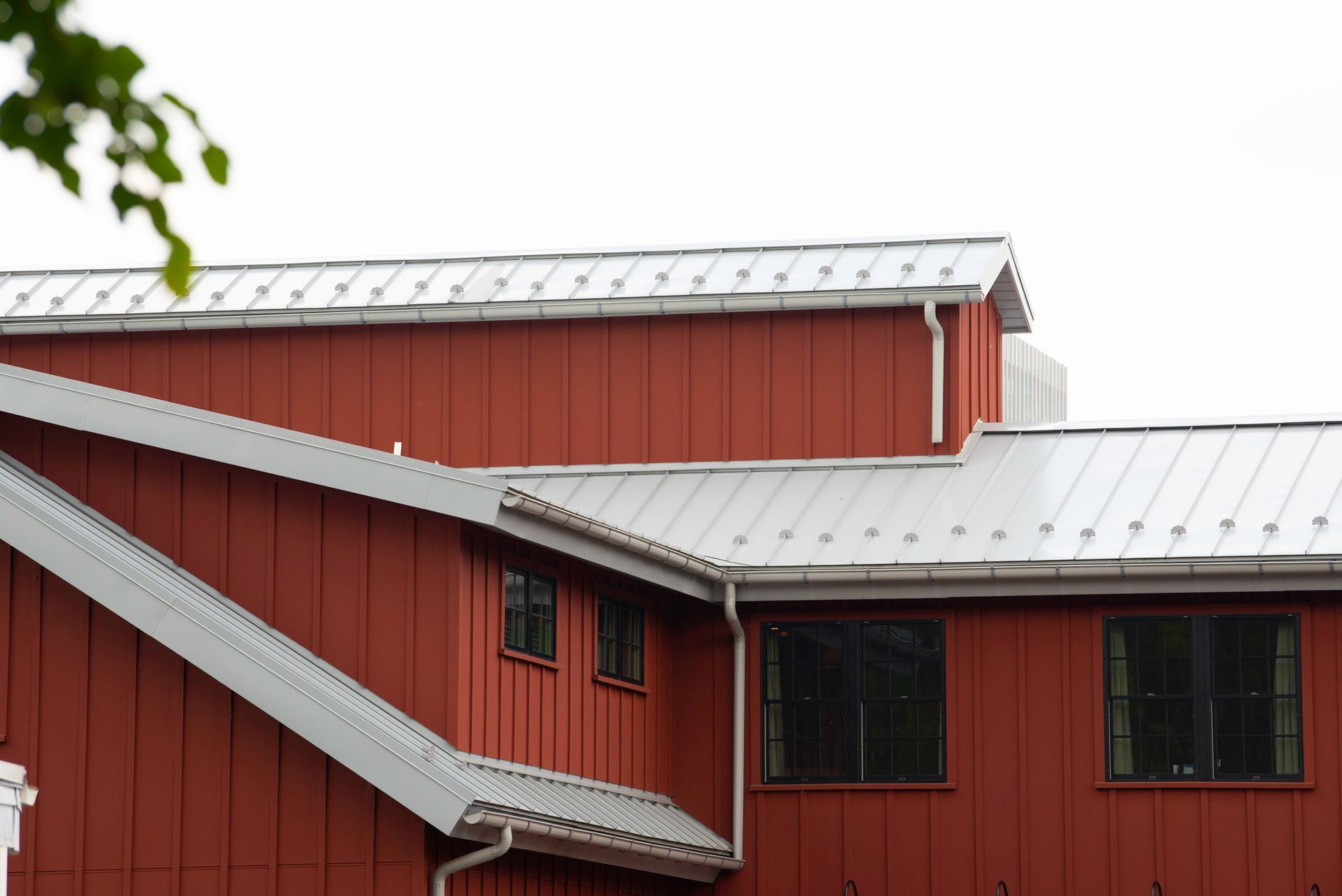How Many Downspouts Do I Need When Installing Gutters In Boise

Downspouts are an integral part of a building's drainage system. They give rainwater a consistent and reliable way to flow away from the foundation, keeping it safe from flooding or erosion.
But how many downspouts should one install? Boise Gutters & Repair Co. can help you repair or replace your old and broken downspouts. Let the 20-plus-year professional contractors do the job for you today; call for an estimate.
What is the recommended number of downspouts for a house?
How Many Downspouts Will I Need for My Home? According to a general rule of thumb, one downspout should be installed for every 20 feet of guttering, although the actual number of downspouts required might vary widely based on factors such as the size of the drainage area, the design of the gutter system, and the climate in the area.
By knowing how to install downspouts correctly, readers can rest easy knowing that water damage from heavy rains or melting snow won't hurt their property. So if you're looking for advice on how many downspouts you need for your house, then read on!
Definition Of Downspouts & Their Purpose
They are vertical pipes, typically made from metal or plastic, that direct water away from a building and into a drainage system.
The goal of downspouts is to keep water from getting too close to a building's foundation and causing flooding. Understanding what a downspout does and how it works can help you determine how many downspouts your property requires.
To understand what a downspout is, one must appreciate its basic function and design. Downspouts come in various shapes including rectangular, round, and oval-shaped tubes that fit together like puzzle pieces at each joint.
For proper flow and to keep them from getting clogged, they have elbow joints put in along their length to keep the flow going in the same direction as gravity. By carrying water away from buildings, gutters protect walls and foundations by diverting rainfall before it has time to cause damage.
Now that we know the definition of downspouts, let's look at calculating the number of downspouts needed for your property.
Calculating The Number Of Downspouts Needed & Where To Put Them
The following are key points to consider when calculating the number of downspouts needed:
- Determine the total length of rain gutters being installed.
- Divide this length by 10 and round up to the nearest whole number; this will give you an estimate of how many downspouts are needed.
- Measure the area where each downspout will be located, as well as its elevation relative to other nearby objects such as windows or doors that could interfere with proper drainage and require additional downspouts in order to ensure adequate water flow away from the house.
- Make sure there is at least one downspout every 20 feet along a straight stretch of guttering for optimal performance.
The size and shape of your home can also affect how many downspouts you need to keep water from running off. If your roof has more than one valley or hip, you may need more than one downspout to keep water from pooling in these places when it rains or melts snow.
Additionally, if your home has large overhangs, additional downspouts should be added so that water does not drip onto walkways or driveways below them. Finally, take into account factors such as local climate conditions, soil type, slope angle, and proximity to trees when making decisions about how many downspouts you need for your particular situation.
Instructions & General Guidelines For Installing Downspouts
Knowing the installation guidelines for effective placement of downspouts can help make sure that your home's roofing system functions properly. When considering how many downspouts you need, consider first where they will be placed on the exterior walls or fascia boards near where water collects in the gutter.
If there is no corner between two sides of a house that are joined by an eave line, you may also need to add more downspouts.
Installing downspouts usually involves screwing brackets to the outside wall or fascia board and then threading the top end of each section into the bottom end of the same section until it is locked in place.
The bottom should fit tightly against the ground or be attached to an underground drain pipe depending on local regulations. If you have any questions about what type of fittings must be used when connecting sections together, consult your local building codes, as every area has different requirements.
Benefits Of Installing Downspouts On Your Home
The following table provides insight into some of the benefits that come with installing downspouts:
| Benefit | Description | Impact |
|---|---|---|
| Water Drainage | Redirects rainwater from your roof away from the house's foundation and landscape design elements. | Maintains structural integrity and reduces potential flooding damage caused by excess surface water retention. |
| Curb Appeal | Enhances aesthetic value to improve the home's selling point if it ever goes on the market for sale. | Home value increases when more buyers are attracted to its appearance due to enhanced visual qualities. |
| Roof Protection | Keeps gutters clear of debris which otherwise would cause clogging or overflow issues resulting in leaks inside walls, ceilings, etc.. | Prevents costly repairs while also preserving property longevity through proper maintenance routines. |
| Foundation Stability | Stabilizes soil surrounding foundations so they do not erode over time due to accumulated moisture levels near base structures. | Protects against long-term damage as well as maintaining overall structural integrity within homes located in areas prone to heavy rainfall or snowfall all year round. |
New Overall, installing downspouts around a home has a lot of benefits. Those who want to protect their investments and make their home more appealing to potential buyers should think about installing them. With these key benefits taken into account, homeowners should now be aware of what needs to be done to properly
This will let rainwater flow away from your house in a safe and efficient way, preventing leaks in the roof and damage to the foundation. maintain such systems once they are installed—something important for any homeowner’s continuing peace of mind about their residence.
Maintenance Considerations For Downspouts
When deciding how many downspouts are needed, it is important to think about how often they need to be fixed. Cleaning gutters and doing regular gutter maintenance can help make sure that clogs or other blockages don't stop water from draining.
If this happens, you may need to fix or replace your downspouts to stop structural damage. Furthermore, inspecting for signs of deterioration, such as cracked seals at joints, can alert property owners that repairs may be required.
In addition to cleaning out debris from gutters, it is also important to make sure downspouts are free-flowing and clear of any obstructions.
It should also be noted that if there is an issue with one of the downspouts not draining properly, this could cause pressure buildup around the remaining spouts leading to further structural issues.
So, making sure all downspouts stay in good shape is important if you want them to keep working well over time.
This means checking seams and joints for cracks or holes that might mean they need to be fixed right away, as well as the hangers and mounts that hold the system in place.
Maintaining these kinds of checks enables you to prevent clogged pipes or broken parts from preventing the water from draining properly.
Frequently Asked Questions
What Type Of Material Should I Use For My Downspouts?
When choosing the material for your downspouts, there are several options to consider. Metal downspouts, like those made of aluminum or copper, are strong and durable, and they don't need much upkeep.
Plastic downspouts come in a variety of colors and may be a more affordable option than metal. Vinyl is another popular choice due to its lightweight design that's easy to install and maintain.
Each type of material has its own benefits when it comes to keeping water away from your home’s foundation, but it also has limitations based on climate conditions and other factors. Aluminum is strong and stable, but it can rust over time.
Plastic, on the other hand, can crack in cold weather or weaken when exposed to direct sunlight. Copper is one of the more expensive materials, but it is also one of the most beautiful and long-lasting if it is taken care of properly.
Vinyl is flexible enough to fit any budget, but it might not be as strong as aluminum or copper in very bad weather.
It's best to research each material thoroughly prior to making a decision about which works best for you, taking into account both cost effectiveness and durable performance.
There are a lot of websites that give detailed information about all kinds of downspout materials and how to install them, so it's important to think carefully before choosing one that will protect your home for years to come without sacrificing quality or durability.
What Size Downspouts Should I Get?
When deciding what size downspouts to get, it is important to consider a number of factors. Measuring the length and width of your downspout can help you determine which size will work best for your needs. It is also beneficial to understand how much water flow the chosen downspout dimensions should be able to handle in order to ensure proper drainage during rain events.
Downspouts come in different sizes, so first figure out how far away the gutter is from the downspout, and then measure the height and width of that area. Once these measurements are taken, compare them with standard downspout lengths and widths available on the market.
You may need larger or smaller ones depending on the amount of water expected at any given time. Also, if there is room, wider downspouts can reduce the noise that rushing water makes when it rains hard.
This could prove helpful if you live near a busy street or highway since sound carries over long distances easily.
It is essential to think carefully before making a decision about choosing the right-sized downspouts as they play an integral role in protecting your property from damage due to overflowing gutters or backflow issues resulting from inadequate drainage systems.
Homeowners can make smart decisions about their rainwater management system by taking accurate measurements, figuring out how much water might flow, and knowing what sizes are available in stores and online.
What Is The Best Way To Secure The Downspouts To My Home?
Securing downspouts to a home is an important safety measure. To ensure they remain in place, it is best to consider the type of attachment being used, as this will affect how secure the downspouts are.
Bolts and screws, on the other hand, are more permanent than duct tape or glue, which can come loose over time because of the weather. It is also necessary to think about where on the house each downspout should be attached.
Most of the time, it's best to put them at least one foot away from windows and doors for the best security.
When selecting an appropriate connection method for attaching downspouts to a home, there are many options available including clips, hangers, and straps designed specifically for connecting gutters and/or downspouts.
These attachments are more stable than common methods like nails or zip ties, but they have to be put on with special tools like drill bits and screwdrivers. Professional assistance with mounting can sometimes be beneficial for ensuring maximum strength connections between the gutter system and the home's siding, trim, stucco or brickwork.
When putting two pieces together, leaving enough space around each joint helps reduce stress on the connections and makes them better able to handle windy conditions by reducing the turbulence caused by air moving around them.
If you attach your downspouts to your house in the right way, water won't pool near your foundation or other sensitive areas when it rains or melts snow, which can cause damage.
If you think carefully about the materials you use and how you install them, you can be sure that your gutters will work well without compromising their structural integrity or putting your property at risk of damage from flooding or erosion.
What Are The Most Common Problems With Downspouts?
Downspouts are an important tool for managing water runoff and preventing water damage. They can have a number of common problems, such as clogged downspouts, rusty gutters, cracked pipes, and pipes that freeze. Understanding the potential issues with downspouts is essential for proper maintenance and operation.
Downspouts often get clogged when dirt and other things get stuck in them over time. This stops water from flowing out of the gutter system. This can lead to overflowing gutters or standing water around the building’s foundation.
To avoid this problem, it's important to clean out the downspout regularly or to install a guard or filter that catches leaves and other debris before they enter the pipe.
Rusting gutters are another common issue with downspouts as moisture accumulates on metal surfaces and accelerates corrosion if left unchecked. Also, cracks in plastic pipes that form when they expand when it's cold can lead to big leaks and expensive water damage.
Lastly, frozen pipes are also problematic since any blockage will cause backup, resulting in flooding inside buildings or near their foundations. It is therefore recommended that homeowners take steps such as using insulation sleeves around exposed pipes, before cold weather hits to prevent these types of issues.
Overall, knowing the most common problems with downspouts will help you make sure they are installed and maintained correctly, protecting your home from water damage that could be caused by drainage systems that don't work right.
With regular inspections and preventative steps like installing guards or insulating materials where needed, you can keep your downspouts working well all year long and feel confident that your property is safe from damage or repairs that could be expensive.
Let Boise Gutters & Repair Help Install Your Downspouts Today
By following these rules and knowing how important it is to install downspouts correctly to protect a home from water damage, homeowners can decide how many downspouts they need for their specific needs.
When selecting materials for your downspouts, it is best to choose one that is corrosion-resistant and lightweight. Aluminum or vinyl are good choices because they can withstand harsh weather and won't rust.
The next step is to figure out how big each downspout needs to be for good drainage. This largely depends on how much rain falls in your area during peak seasons and how big your roof is.
Lastly, proper installation techniques must be followed when securing the downpipes onto the house itself—use heavy-duty screws or bolts with waterproof washers between them and the wall surface so that strong winds won't dislodge them.
You can do this yourself or call us today for a quote or free estimate!
You might also like
Boise Gutters | New Installation | Repair
Book a Service Today
We will get back to you as soon as possible
Please try again later
Gutter Specialists - Skilled & Professionals
Contact us for your inquiries. Our phones are open 24/ for your needs.
All Rights Reserved | Boise Gutters



